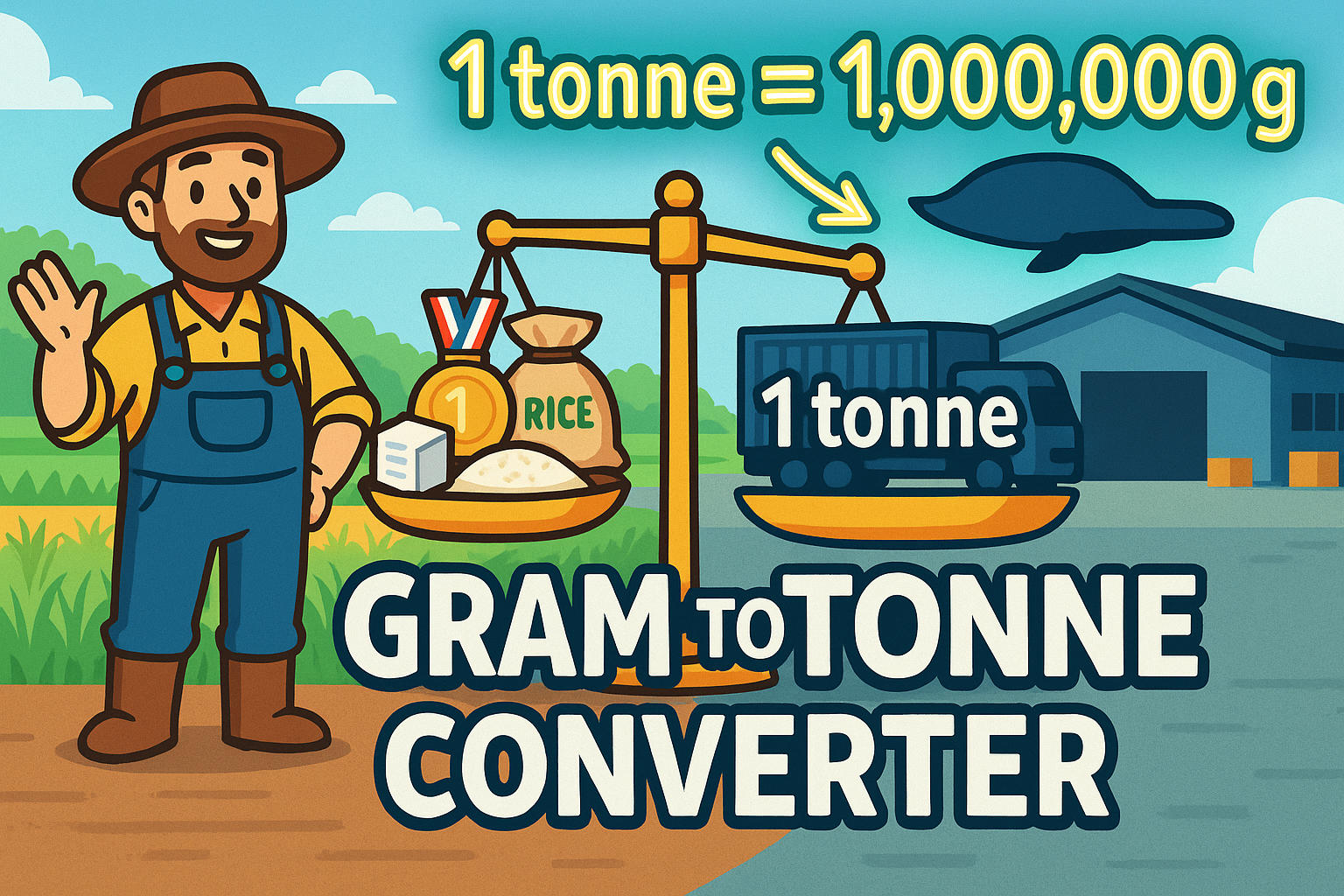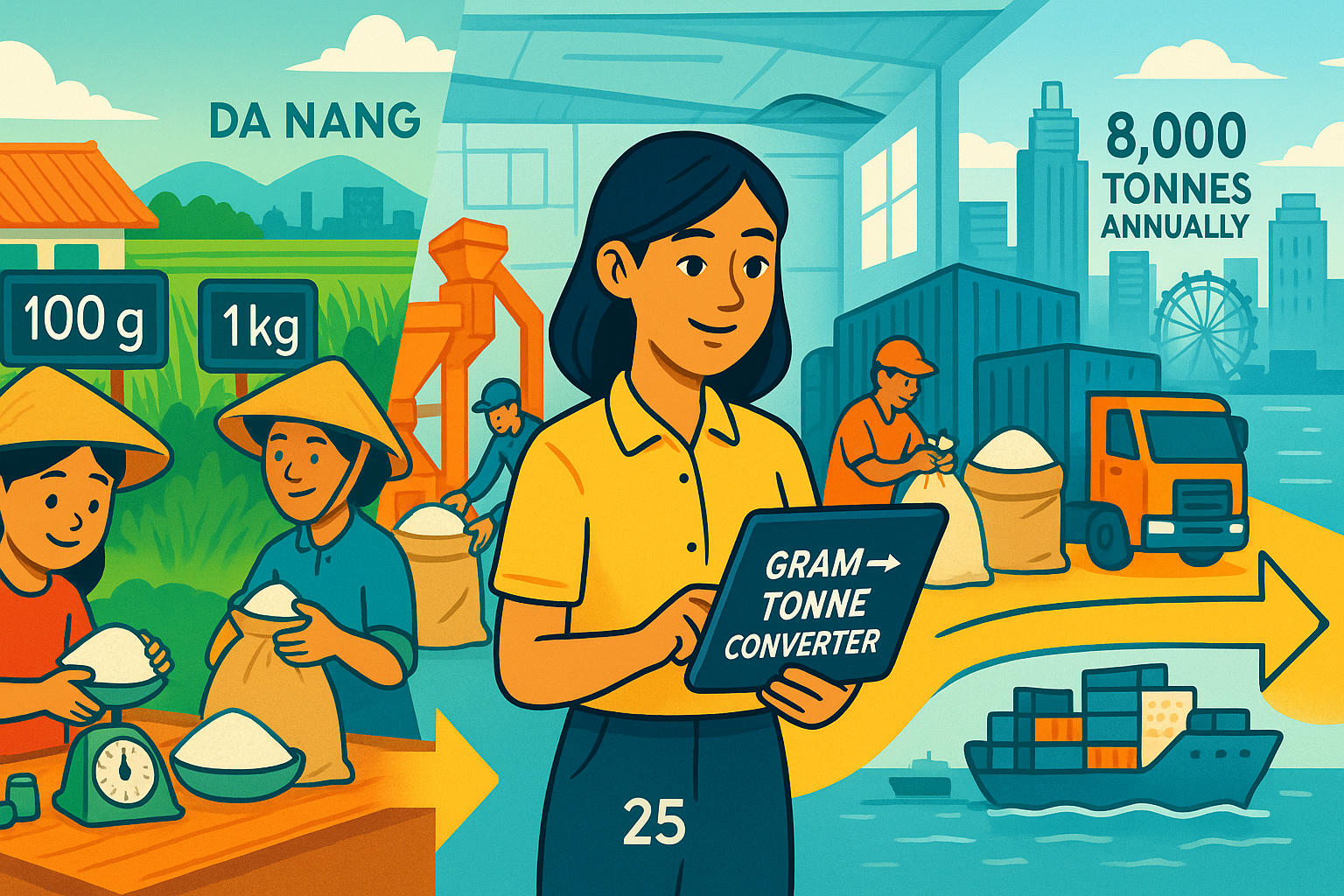gram to tonne – How to convert g to t
Need to convert grams to tonnes? You're dealing with a major shift in scale: 1 tonne equals 1,000,000 grams. Whether you're in logistics, agriculture, or environmental science, converting grams to tonnes (g to t) is essential for managing bulk data and physical goods. This guide walks you through what the units mean, how to convert them, and where they're used in real life.
If you work with mass at any scale, check out our Weight Conversion for instant calculations.

Grams and Tonnes
-
A gram (g) is one of the most widely used metric units for mass. It's ideal for measuring light items like sugar, documents, food portions, and pharmaceuticals.
-
A tonne (also called a metric ton) is a massive unit of weight equal to 1,000 kilograms, or 1,000,000 grams. It is used for measuring heavy cargo, waste output, industrial shipments, and environmental loads like CO₂ emissions.
How to Convert Gram to Tonne?
The formula is incredibly simple:t = g ÷ 1,000,000
Example: If you have 750,000 grams:750,000 ÷ 1,000,000 = 0.75 tonnes
Need precision? Try our Unit Converter
Did You Know?
-
The Olympic gold medal weighs around 556 grams, but is mostly made of silver. That’s just over half a kilogram—not even close to a tonne!
-
A ream of paper (500 sheets) weighs roughly 2,300 grams. It would take nearly 435 reams to hit just 1 tonne.
-
The average blue whale weighs about 150 tonnes, making it the heaviest animal known to have ever existed.
-
In 2021, the world produced over 9 billion tonnes of plastic—only about 9% of it has been recycled, according to the United Nations.
From Market Stall to Metric Tons: Lani’s Leap
Lani Vu grew up in a farming family on the outskirts of Da Nang, Vietnam. As a child, she helped her parents sell rice by the gram and kilogram at a local market. They weighed bags manually and recorded sales with chalk on wooden boards.
At 25, Lani opened her own rice processing warehouse. Within a few years, she was exporting to Japan and South Korea. But her biggest challenge? Scaling the numbers. Clients wanted data in tonnes, while her entire team still thought in grams.
So Lani introduced a digital system using gram-to-tonne converters and trained her team on metric scaling. “It was like turning on a light switch,” she said in a local business interview. “Suddenly, we saw how small actions became massive volumes.”
By 2023, Lani’s company was processing over 8,000 tonnes of rice annually. Her journey shows how understanding unit conversions—especially from grams to tonnes—can unlock global potential from local roots.

Conclusion
The gram to tonne conversion may seem like a big leap, but it’s a vital step when working with bulk weight data. With 1 t = 1,000,000 g, you can shift perspectives from micro to macro in seconds.
Explore everything in our Conversion .

